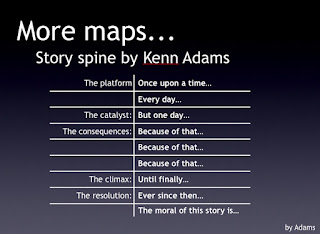Keynote #1: Jason Ohler
We started this morning with Jason Ohler, a pioneer in the field of digital technology, education and teaching. He began with stating his whakapapa in education, especially digital education. He showed us his learning journey and the teachers who "opened doors" for him, even when it did not fit the system. He also supplied us with his website: http://www.jasonohler.com/index.cfm
Opening doors is a key idea from his keynote that I will take away. As teachers we open doors to new avenues of learning for our students.
Personally, I've always considered myself to be a sower of seeds. I plant a new idea, possibility, notion in a young fertile brain... it's not always ready to germinate... sometimes it needs other gardeners/teachers to tend to that seed before it reaches its potention.
Anyhow, Jason Ohler said that teachers open doors for students in their learning journeys despite of the system. So we need to be door openers. Students are banging on the door to show us how they are learning with their technology.
Jason Ohler said that the next 'R' in education should be art. He believes that art opens up so many opportunites for children in their learning journeys.
Our students need to be problem finders, instead of us teachers always supplying the problem to be solved. Our students need to be building learning from a problem - using this as the basis of a story for learning - ‘what’s going to happen next?’ We (the teachers) need to focus on helping kids understand their learning, documenting their learning and turning learning from turning in a report to creating stories.
Jason lamented that so many dining rooms in family homes have been replaced by tv rooms, that family conversation have been replaced with "Shhhh, the movie is on!" This results in disconnects, rather than connects - families too busy with screen time to talk to each other. He also pointed out that families need to ask each other "So what did you do on Facebook today?" Our youth have 'real' lives and 'virtual' lives and we need to be a part of both. Be their Facebook friends.
Think about this: how many times have you put a You Tube clip on and the kids lean back on their chair and check out? Jason Ohler recommends telling the kids to put their chips away and get out their pen and paper to take notes. Give them the question, which answer will be in the clip, before playing the clip.
The next key idea is: Storytelling has been working in education for over 50 years. Jason illustrated this with a story about his grade 2 teacher giving him a way to remember the name of dinosaurs, through storytelling.
He also talked about reports not being reports - that the learning journeys of your students can be stories - instead of a bunch of reports, make a bunch of stories.
Breakout #1 - Digital Storytelling with Jason Ohler:
When it comes to story telling, is all about the narrative. We will sit through a low budget production if the narrative is good. We should not give an 'A' to everything that moves, especially if the story is poor!! The most important part of the story is the narrative.
Key resources:
- green screen http://www.jasonohler.com/resources/NomeDST.cfm
A green screen doesn't have to be expensive. Paint a wall green, use green material pinned up on the wall.
- digital story telling site http://www.jasonohler.com/storytelling/index.cfm
- music impact
Below are a couple of free places to get free music for digital photo stories.
freeplaymusic http://freeplaymusic.com/
creative commons http://creativecommons.org/
- pictures
www.stockphotosforfree.com
Remember that the narrative is the key to a good digital story.
The story is core in each person's education journey.
Info containers....
Story vs list 1, 2, 3, 4,
Storymapping instead of Storyboards
http://www.jasonohler.com/pdfs/storybook11-v2-vps-extracts.pdf
https://sites.google.com/site/mediapsychologystory/story-table
Story spine
http://www.jsd.k12.ak.us/~degeners/8thgrade/imovie/storyspine.pdf
Remember the rule of 80/20 - Don't let the perfect be the enemy of the good.
Process: http://tellastory.wikispaces.com/DS+Process
Plan
Write'
Speak/record
get media
create/reserve
add pictures and/or video
add citation
if time:
add music
The pictures above are explained more in the tellastory.wikispace.com site (link above).
I found having Jason Ohler first up to be inspirational. He talked about everything I need to make a Titanic movie with my class this term. They have created the Titanic already, it's been taking up significant space for months is my class. Now we just need a script!!




No comments:
Post a Comment